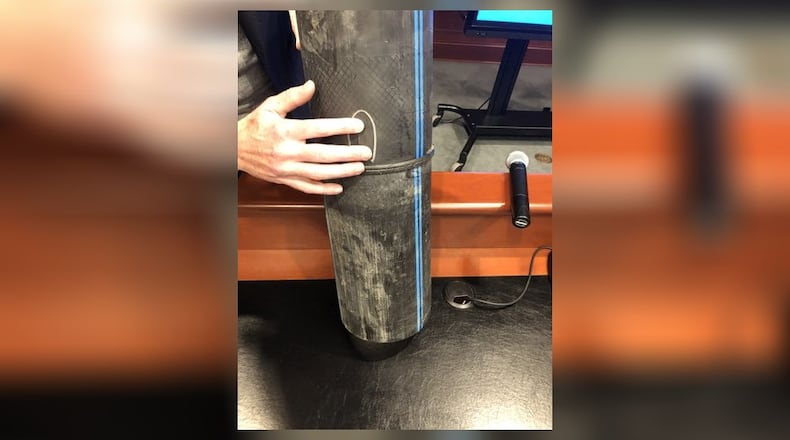John Bui, superintendent of Hamilton’s south treatment plant, said that while chlorine dioxide is making the high-density polyethylene pipes brittle, it isn’t harmful to the people who drink it. Most water processors use chlorine gas, which is less complicated to use than chlorine dioxide.
Even some places where chlorine gas is used in disinfection are switching back to iron pipes.
Hamilton, which operates its own water utility, used the high-density polyethylene pipe when it replaced water mains in the neighborhood about 20 years ago, said Hamilton Executive Director of Infrastructure Jim Logan.
“We’ve got about 21 miles of HDPE piping in our system now, and it is catastrophically failing, about 60 years ahead of when it should have,” Logan said. “This, back about 20 years ago, was the future of water mains, and unfortunately, the chemicals we use attack the pipe and then cause it to fail. So we’re going back to iron piping.”
Logan told the city council’s finance committee on Nov. 15 that breaks have become common.
“We have water-main breaks non-stop,” he said. “We had two on Sunday. If you look at the frequency of breaks, it’s really been increasing in Highland, so we’re stepping in, we’re going to give them all new water mains, improve the reliability, and then after we get the water mains in, we’ll come back and we’ll repave everything because water-main projects, they really do tear up a neighborhood.
“But if you can live through that, it’s a really nice improvement on the end of it.”
City Engineer Rich Engle said staff is now designing the project, and it likely will bid out early in 2020 with construction likely starting in the spring.
He estimated the project will cost $3.5 million, with $2.1 million of that coming from an Ohio Public Works Commission loan with zero percent interest and the city borrowing the rest of the amount.
Logan said chlorine dioxide creates a thin brittle layer in HDPE pipes, which eventually leads to cracks and then failures of the pipes.
“You’re starting to see a lot of other municipalities that use standard chlorine, and are still going back to iron pipes,” Logan said. “I don’t know that there is 100-percent agreement out there on which is the best material.”
An entire town in France installed HDPE pipes, “and they had failures in as short as one year,” he said.
Meanwhile, the average age of city’s water mains overall is about 75 years, Logan said. Some are 125 years or older, such as a 24-inch main below Third Street that is being replaced and should be finished in February.
Bui said the chlorine dioxide, which Hamilton has used since 1972, “just affects the polymer in the piping and causes it to become brittle.”
“At low concentrations, it helps prevent microbial growth in the water while it travels through the distribution pipeline,” Bui added.
About the Author
